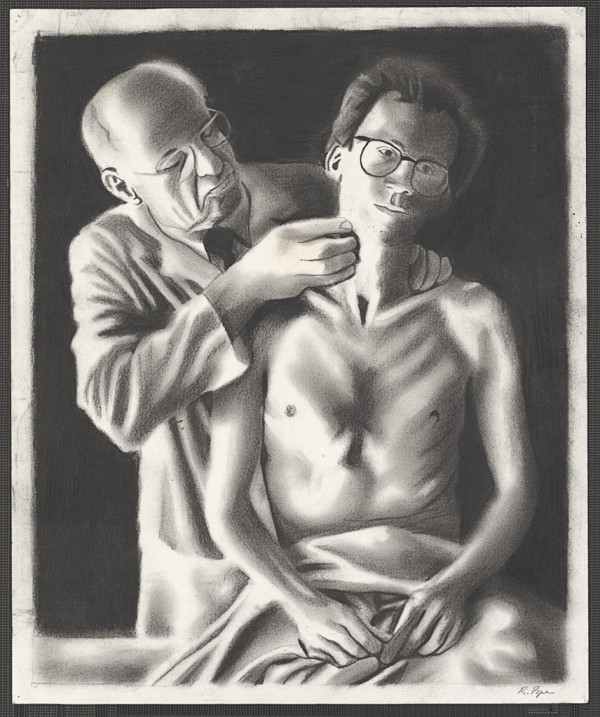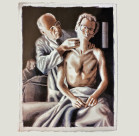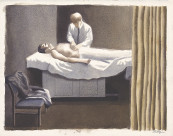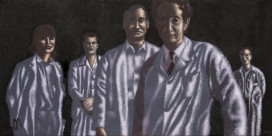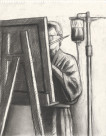Robert’s third version of the doctor examining a patient reaches back into art history to quote Goya’s Self-portrait with Dr. Arrieta, the physician who Goya credits with saving his life. Goya’s painting is both a grateful tribute and a pieta that substitutes doctor and patient for the dying Christ in the arms of his mother. Robert changes the Goya by inserting his own self-portrait along with a portrait of his physician, Dr. Ross Langley. The Goya image focuses on the notion of restoration, bringing an ailing person back to health. Robert’s image functions as the record of the fateful day, when, during a routine examination, cancerous lumps were detected in his neck. This is the moment of discovery, which will lead to the realization of his illness.
Robert made many self-portraits in his sketchbooks, as practice pieces and to record his changing moods and sense of self. He rarely worked any of these sketches into paintings or larger works for public exhibition. This large charcoal drawing is an exception and is part of a conscious effort to be more personal, more forthcoming and confessional in his art.
Robert was influenced by Goya in a more general way, as Goya saw himself as a chronicler of his times, depicting a great diversity of characters and classes of people, combining realism with allegory and dream-like fantasies. Robert would follow many of these strategies in his “Illness & Healing” project.
